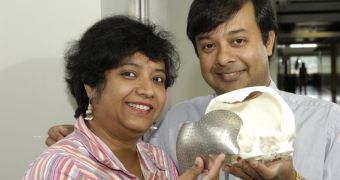Washington State University (WSU) investigators led by materials scientist Susmita Bose and materials engineer Amit Bandyopadhyay are now using funds from the US National Science Foundation (NSF) to develop techniques that will enable 3D printers to create custom prosthetics for the human body.
One of the reasons why 3D printers are becoming increasingly popular in a variety of fields is that they enable the creation of custom-designed objects for numerous applications. Lately, medical researchers have begun looking into ways of using these capabilities for human health applications as well.
If the WSU investigation is successful, then 3D printers could soon be used to create materials and prosthetics that closely resemble the structure and function of human bones. These materials could then be used to address unconventional anatomies and deformities, as well as atypical, large-scale injuries.
The approach the husband-and-wife duo is proposing relies on a technique called Laser Engineered Net Shaping (LENS), which enables the seamless integration of artificial, printed bones with organic tissue. This type of integration could lead to implants that can endure in the body for longer periods of time.
“In the majority of cases, results are fantastic with off-the-shelf implants. However, physicians come across many patients in which the anatomy or injury is so unique they can't take a part off the shelf. In these unique situations, the surgeon becomes a carpenter,” Bandyopadhyay explains.
In traditional prosthetics manufacturing processes, the rough versions of the artificial limbs or bones have to be polished and finished before they can be used. With the LENS approach, the materials can be used as soon as they have been created by a 3D printer.
LENS works by blowing tiny particles of various materials in a laser beam, where they melt. These particles then cool immediately after they exit the beam, when they are deposited on a surface layer by layer. This approach to 3D printing is very precise, and can produce custom prosthetics easily.
Before the process starts, doctors have to use computerized tomography (CT) or magnetic resonance imaging (MRI) to create a three-dimensional model of the injury site. This map is then fed into the LENS 3D printer, which creates an implant that fits seamless in the injury site.
“The most exciting part is it doesn't take months. Within a few hours the first iteration of a design can be done. It then takes another five to six hours to manufacture it. As long as the physician is connected to the Internet, within three days he or she can have a custom, patient-specific implant in hand,” Bandyopadhyay concludes.

 14 DAY TRIAL //
14 DAY TRIAL //